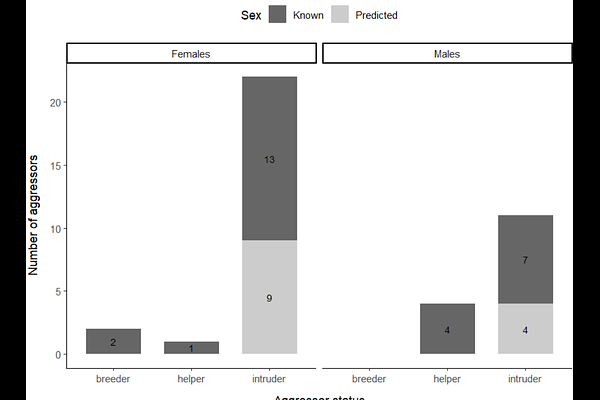Infanticide in a colonial cooperative bird is not associated with direct reproductive benefits

Infanticide in a colonial cooperative bird is not associated with direct reproductive benefits
Covas, R.; Silva, L. R.; Ferreira, A. C.; D'Amelio, P. B.; Fortuna, R.; DuVal, D.; Paquet, M.; Doutrelant, C.
AbstractInfanticide, the killing of dependent young by adult conspecifics, is an extreme form of conflict that remains poorly understood. Previous studies suggest that it is associated with reproductive benefits, either by making breeders newly available for reproduction or by increasing offspring care and reducing competition for resources. In addition, infanticide may result from a reproductive trade-off, where parents kill their offspring if environmental conditions compromise their reproductive value. Here, we combine video, genetic and individual-level reproductive data collected over 12 years to describe infanticide in a highly social, cooperative bird, the sociable weaver Philetairus socius and to establish whether direct reproductive benefits or life-history trade-offs are possible motivators for this behaviour. We documented 50 cases of infanticide and identified 27 aggressors with known histories. These were mostly born outside the colonies where they committed infanticide (63%) and there was some bias towards females and younger individuals. Aggressors were usually not part of the victim\'s breeding group (74%), but in two cases infanticide was committed by the breeding female, and in five by helpers. In most cases, aggressors were not reproducing at the time of the infanticide, never mated with any of the breeders from the attacked nest, nor occupied the nest from where the chicks were evicted. Only eight of the known aggressors were confirmed as breeders after the attacks, and these mostly reproduced at the colony where the attacks were committed. Overall, we found no evidence for direct reproductive benefits of infanticide in sociable weavers. However, the younger age of aggressors, lack of genetic relatedness to the victims and future breeding at the colony suggest that competition between breeding groups, and hence indirect reproductive benefits, could provide motivation for infanticide in this population. Additional work over longer periods is needed to identify these possible indirect fitness benefits of infanticide.